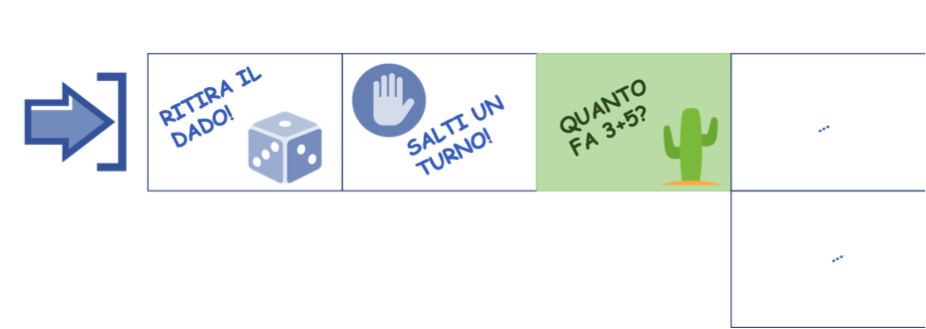How do you say it in ...? Snakes and ladders in multiple languages (6+)
Aims
The activity aims to develop awareness of linguistic diversity and share it with classmates, enhance languages other than Italian spoken in class and put all the languages (and consequently, the speakers) involved in the activity on the same level in order to break the hierarchical relationships that can be created in everyday life.
How to:
Phase 1
Children, possibly together with their families, are involved in the collection of linguistic material used for the actual activity. A collection of multilingual words generated by the class (“linguistic resevoir”) is collected (see 'The multilingual digital dictionary' → link to the activity already present on the platform), involving all the languages and dialects known and used by children.
The children, with the teacher, create one or more digital and / or paper documents featuring some words in all the languages present in the class repertoire: greetings, strategies to introduce yourself (my name is xy, I live in Milan , ...), numbers up to ..., colors,members of the family, parts of the body, ...
NB.:
- Words can be represented in 'phonetically (writing them in the Italian alphabet as they are read) in a way that does not penalize students who can not write in their mother tongue and make reading for others less complicated;
- It is not recommended to represent the different foreign words with translations into Italian to avoid subordinating the different languages to Italian; it is advisable to use an image/drawing of the designated referent (object, part of the body, etc.) and arrange the words in the different languages around it.
Phase 2
The children create a Snakes and ladders (gioco dell’oca) board.
In addition to traditional activities (stand still a turn, go ahead two, ...), insert special spaces called 'how do you say it in…?' which indicate the linguistic activity to be successfully carried out in order to continue with one’s turn.

|
1 |
Serbian |
|
2 |
Spanish |
|
3 |
Tagalog |
|
4 |
Persian |
|
5 |
… |
So, when a player lands on the green box, rolls the dice or dice (depending on the number of languages!): if it is number 4, the answer to the question (how much is 3 + 5?) should be given in Persian. If the answer is correct, the dice are rolled again.
The linguistic knowledge required in the spaces comes the collection of multilingual words generated by the class (“linguistic resevoir”).
To encourage cooperation between children, a rule can be added whereby a player can ask for help from a classmate, who is an expert in a certain language, up to a maximum number of times. Or children can play in teamsmade up of children with different language skills.
Materiali e strumenti digitali